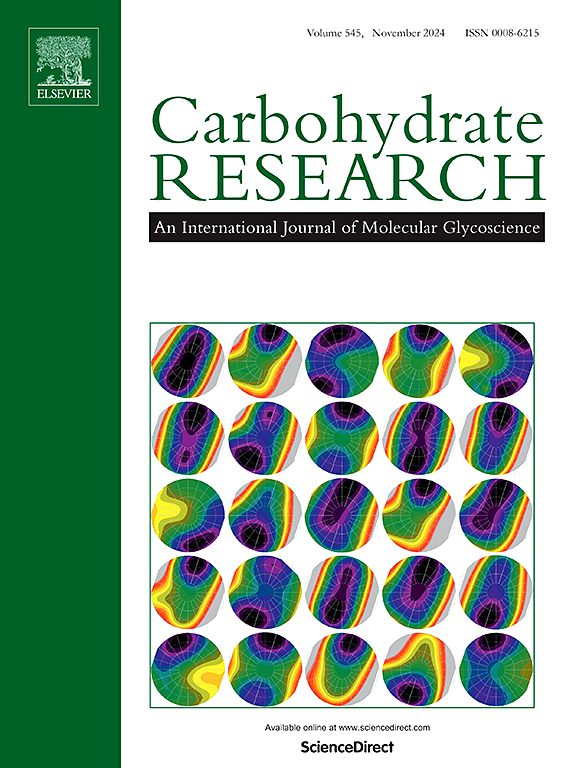Accessible 6-O mono-detrimethylsilylation at per-O-TMS asymmetric disaccharides and their derivatization
IF 2.4
3区 化学
Q3 BIOCHEMISTRY & MOLECULAR BIOLOGY
引用次数: 0
Abstract
Efficient mono-detrimethylsilylation at C-6 position of per-O-trimethylsilylated protected asymmetric disaccharides was achieved by an inexpensive reagent, ammonium acetate, at room temperature. The newly formed free hydroxyl at the non-reducing end of the product, 2, 3, 4, 2′, 3′, 4′, 6′-heptakis-O-(trimethylsilyl)-d-lactose (2a), was coupled with azido, acetyl groups, and the modified intermediates represented potential precursors for the corresponding primary asymmetric modification of disaccharides. To broaden the usefulness of TMS-intermediates, the glycosylation and esterification occurred on the mono hydroxyl group of 2a simultaneously. Meaningfully trisaccharide derivative 7a was also obtained by utilizing the key intermediate 2a.

不对称双糖的6-O单去三甲基硅基化及其衍生化
采用廉价的醋酸铵试剂,在室温条件下,对受保护的非对称双糖进行了C-6位单去三甲基硅基化反应。在产物的非还原端新形成的游离羟基2,3,4,2 ',3 ',4 ',6 ' -庚基- o -(三甲基硅基)-d-乳糖(2a)与叠氮基,乙酰基偶联,修饰的中间体代表了相应的初级不对称修饰的潜在前体。为了扩大tms中间体的用途,糖基化和酯化同时发生在2a的单羟基上。利用关键中间体2a得到了有意义的三糖衍生物7a。
本文章由计算机程序翻译,如有差异,请以英文原文为准。
求助全文
约1分钟内获得全文
求助全文
来源期刊

Carbohydrate Research
化学-生化与分子生物学
CiteScore
5.00
自引率
3.20%
发文量
183
审稿时长
3.6 weeks
期刊介绍:
Carbohydrate Research publishes reports of original research in the following areas of carbohydrate science: action of enzymes, analytical chemistry, biochemistry (biosynthesis, degradation, structural and functional biochemistry, conformation, molecular recognition, enzyme mechanisms, carbohydrate-processing enzymes, including glycosidases and glycosyltransferases), chemical synthesis, isolation of natural products, physicochemical studies, reactions and their mechanisms, the study of structures and stereochemistry, and technological aspects.
Papers on polysaccharides should have a "molecular" component; that is a paper on new or modified polysaccharides should include structural information and characterization in addition to the usual studies of rheological properties and the like. A paper on a new, naturally occurring polysaccharide should include structural information, defining monosaccharide components and linkage sequence.
Papers devoted wholly or partly to X-ray crystallographic studies, or to computational aspects (molecular mechanics or molecular orbital calculations, simulations via molecular dynamics), will be considered if they meet certain criteria. For computational papers the requirements are that the methods used be specified in sufficient detail to permit replication of the results, and that the conclusions be shown to have relevance to experimental observations - the authors'' own data or data from the literature. Specific directions for the presentation of X-ray data are given below under Results and "discussion".
 求助内容:
求助内容: 应助结果提醒方式:
应助结果提醒方式:


